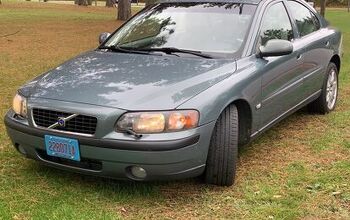The 2018 E-Pace Drinks More Than Its Bigger Brother

Just to clear things up right off the bat, Jaguar’s newest model, the E-Pace, is not the brand’s upcoming electric sport crossover. That’s the I-Pace. Because “I” stands for … ions, we presume.
No, the E-pace is the smaller answer to Jag customers looking for something less than an F-Pace, but not too much less. Riding on the Range Rover Evoque platform, the E-Pace boasts less overhang and a shorter overall length, while retaining the styling cues and handling of its popular larger sibling. However, despite being smaller in most dimensions, there’s one area where it actually tops the F-Pace: in consumption of fuel.
The Environmental Protection Agency has released fuel economy ratings for one of the 2018 E-Pace’s two configurations — this one the higher output 2.0-liter turbocharged four-cylinder seen on higher-trim models. It’s good for 296 horsepower and 295 lb-ft of torque sent to all four wheels.
The combined rating bestowed on the hotter E-Pace is 23 miles per gallon. In the city, this E-Pace can expect to return 21 mpg, and 27 mpg on the highway.
However, buyers of a 2018 F-Pace equipped with the same engine can expect 24 mpg combined, helped along by a higher city rating of 22 mpg. Highway mileage is the same. Smaller to the eye doesn’t necessarily mean thriftier at the pumps — we saw this recently with the Nissan Rogue’s little brother, the Rogue Sport (Qashqai in Canada).
On the surface, the E-Pace’s ZF nine-speed automatic transmission, coupled by its smaller size, would seem to give it an advantage. However, the E-Pace, when equipped with the 296 hp engine, actually outweighs the F-Pace by 130 pounds. Its transmission also has a higher final drive ratio than its eight-speed sibling.
Still, a single MPG isn’t likely to muss anyone’s hair, as the E-Pace’s main job is to provide a lower entry point to Jag’s utility lineup. For $39,595 after delivery, the new SUV’s base MSRP is meaningfully lower than the $43,060 F-Pace. Base models of both vehicles make do with a 2.0-liter making 246 hp in the E-Pace, 247 hp in the F-Pace, and 269 lb-ft in both.
[Image: Jaguar Land Rover]

More by Steph Willems
Latest Car Reviews
Read moreLatest Product Reviews
Read moreRecent Comments
- Lorenzo Motor sports is dead. It was killed by greed.
- Ravenuer Sorry, I just don't like the new Corvettes. But then I'm an old guy, so get off my lawn!😆
- Lorenzo Will self-driving cars EVER be ready for public acceptance? Not likely. Will they ever by accepted by states and insurance companies? No. There must be a driver who is legally and financially liable for whatever happens on a public thoroughfare. Auto consumers are not afraid of the technology, they're afraid of the financial and legal consequences of using the technology.
- Lou_BC Blows me away that the cars pictured are just 2 door vehicles. How much space do you need to fully open them?
- Daniel J Isn't this sort of a bait and switch? I mean, many of these auto plants went to the south due to the lack of unions. I'd also be curious as how, at least in my own state, unions would work since the state is a right to work state, meaning employees can still work without being apart of the union.


































Comments
Join the conversation
I-Pace, E-Pace, sounds confusing. What about P-Face? Now there's a badge you won't forget lightly. ;-)
This thing wont sell well, maybe even worse than the e-pace; its too expensive, too badly proportioned and does not have good engine options...